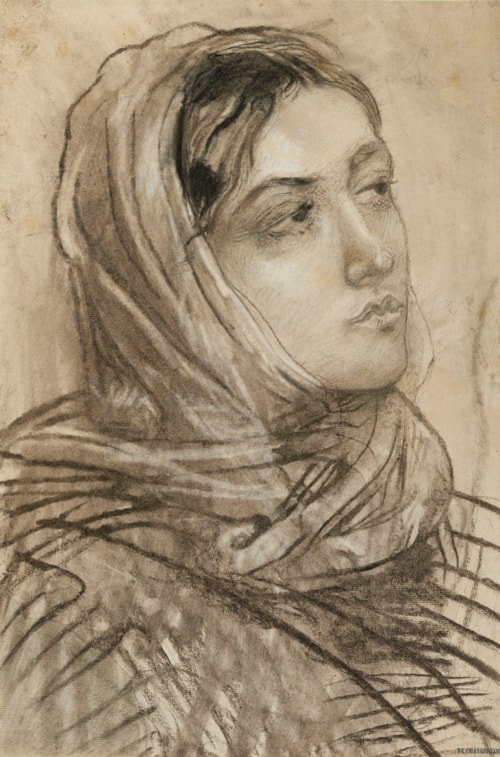
Théodore CHASSERIAU
El Limón (Santo Domingo) 1819 - Paris 1856
Biography
Although he died at the age of only thirty-six, Théodore Chassériau enjoyed a successful and somewhat controversial career. Born in the Caribbean to a French father and Creole mother in Santo Domingo (now the Dominican Republic), he moved with his family to Paris in 1822, at the age of three, and was raised largely by his eldest brother Frédéric. At the age of eleven or twelve he was admitted as a pupil into the studio of Jean-Auguste-Dominique Ingres, a period of instruction that ended in 1834 when Ingres left for Rome to become director of the Académie de France. Two years later, in 1836, Chassériau made his debut at the Salon, exhibiting two paintings which won him a third-class medal. He continued to exhibit regularly at the annual Salons, although his paintings were not always accepted by the juries. Portraits and religious subjects made up much of his output, the latter including a number of major decorative commissions for churches in Paris and elsewhere.
The single most significant public commission of Chassériau’s career, however, was secular in nature; the mural decoration of the staircase of the Cour de Comptes in the old Palais d’Orsay in Paris, begun in 1844 and completed in 1848. Painted entirely without the aid of assistants, the fifteen large panels that made up the decoration amounted to the most substantial mural project undertaken by a French artist up to that time and earned Chassériau the sum of thirty thousand francs. Greatly admired by all who saw them, almost the entire decorative scheme of the Cour de Comptes was largely destroyed by a fire during the Commune of 1871, and only fragments survive today. Later public commissions included the decoration of the apse of the church of Saint-Philippe-du-Roule, completed in 1855, and the baptismal chapel of Saint Roch.
Chassériau was a gifted and prolific draughtsman, producing numerous preparatory studies for each of his works as well as finished portrait drawings. Apart from a group of 152 drawings sold at auction in Paris in 1857, the bulk of the drawings from Chassériau’s studio, numbering over 2,200 individual sheets and thirty-seven sketchbooks, were retained in the family of the artist for over seventy years, before being presented to the Louvre in 1934.


